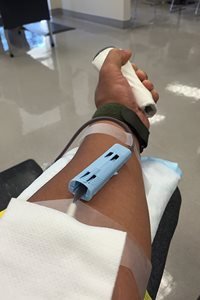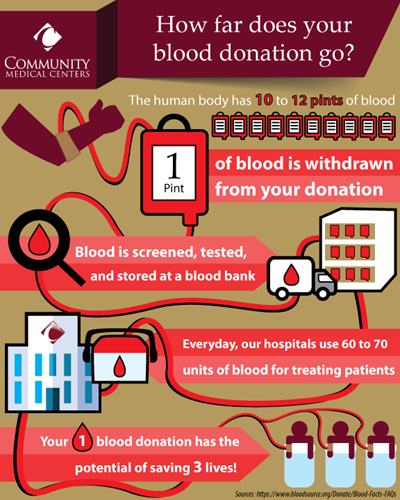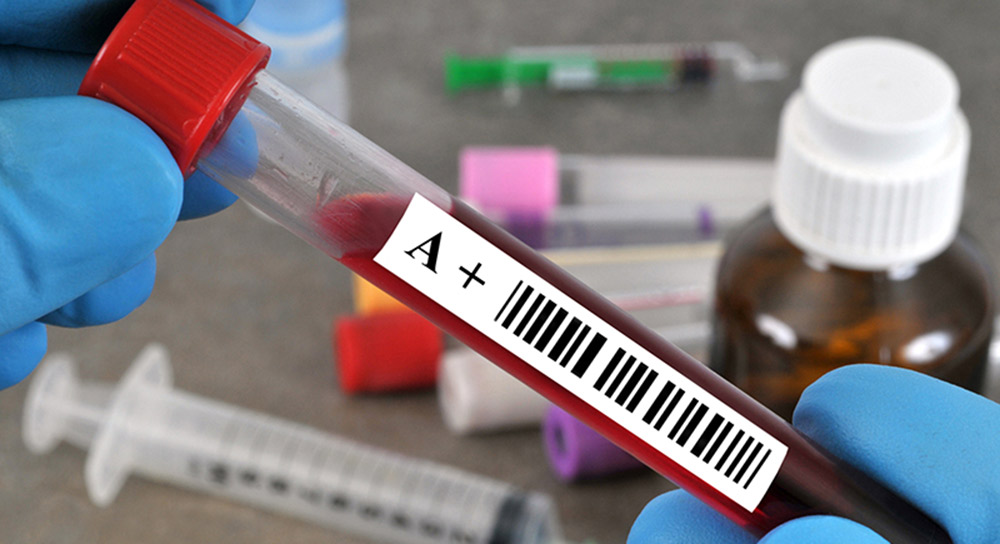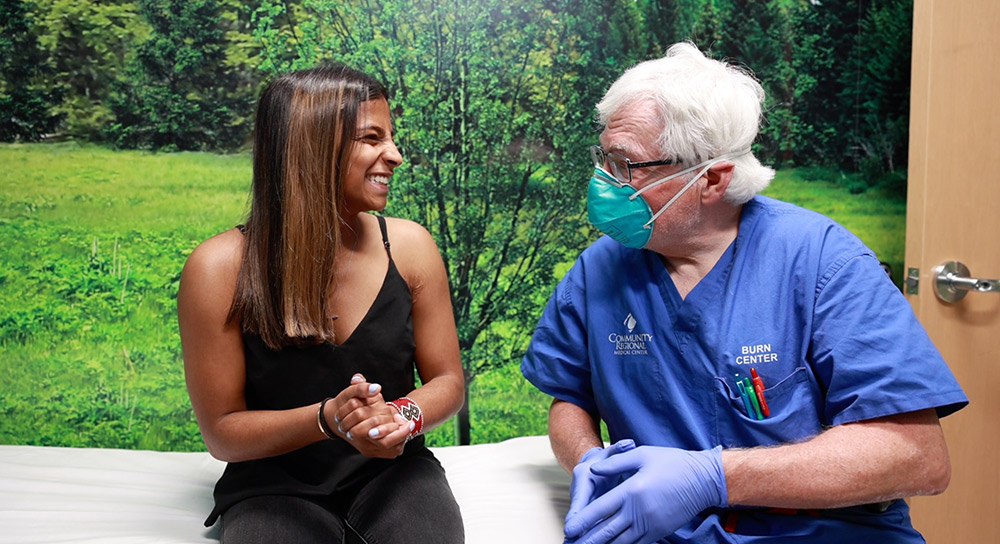On the flight, Michael nearly bled to death. Paramedics used 8 pints of blood, more than 60% of his original blood, to save his life. Missy Hunt is grateful that those pints were available.
A vital supply for a heavy user
For all of Community Medical Centers’ hospitals – Community Regional, Clovis Community, and Fresno Heart and Surgical – a steady and fresh supply of blood is vital to the day-to-day operation of saving lives.
Dr. David Slater, pathologist and medical director of Community Regional’s Laboratory, says, “We have target inventory levels we try to maintain for red blood cells, platelets, plasma, and cryoprecipitate,” holding about 200 units of red blood cells at each location. However, “in a big hospital that gives care like ours, we use about 60 to 70 units of blood every day ... And you have to realize that each [blood donation] comes from an unpaid volunteer somewhere.”
Community has an exclusive partnership with the nonprofit Central California Blood Center (CCBC) to supply red blood cells and other blood components to its hospitals. With four different locations in Fresno where donors can comfortably donate their blood, the CCBC provides ample opportunity for donors to make a difference. However, just like blood banks across the nation, the CCBC faces challenges to sustain the donations its hospital customers rely on each day.
“We place orders every day, but there are times when there are blood shortages. We may pick up the phone and learn that there is a shortage” says Dr. Slater. Most common are “shortages during the holidays when fewer donors come in, at the same time that hospitals are in need, especially Community Regional, because of its size and trauma program.”
Important types
Saving a life through blood donation is an easy process, but the CCBC says it’s a continual challenge to encourage donations, especially from all types of donors.

 “Diversity and our ability to recruit blood donors from every race group is critical if we are to meet the needs of patients,” says Leslie Botos, Director of Community Relations & Development at the CCBC. According to the American Red Cross, “O positive is the most common blood type. [But] not all ethnic groups have the same mix of these blood types” with AB negative being the most uncommon among all demographics.
“Diversity and our ability to recruit blood donors from every race group is critical if we are to meet the needs of patients,” says Leslie Botos, Director of Community Relations & Development at the CCBC. According to the American Red Cross, “O positive is the most common blood type. [But] not all ethnic groups have the same mix of these blood types” with AB negative being the most uncommon among all demographics.
Dr. Slater notes that our “biggest demand is always for the most common blood types - and that would be A positive and O positive, especially for red cells.” But the next heaviest use of blood type is O negative because it’s considered “universal” - the type of blood that anyone can receive. And that’s important because “coming in as a trauma patient, we might not know your blood type right away. So those O negative units are precious,” says Dr. Slater, “and also typically it's the blood type used for babies.”
Managing resources
As the Medical Director for Community Regional’s Lab, Dr. Slater emphasizes careful “blood management” by encouraging treatments and practices which don’t involve giving more blood than necessary for a patient’s recovery. Additionally, advanced equipment, such as the lab’s ROTEM (rotational thromboelastometry) provides “a way to quickly look at how well a patient’s blood is clotting… and helps doctors determine if the patient needs plasma, platelets, or cryoprecipitate, and exactly how much” explains Dr. Slater. By more quickly and efficiently determining the needs of the patient, blood units can be conserved.
Saving lives
Since 1970, January has been designated as Blood Donor Awareness month, but the demand for blood is yearlong. According to the American Red Cross, the average red blood cell transfusion requires approximately three pints. Of this, only about 1 pint is drawn during a single donation.
Michael Hunt, who received over 15 units of blood during his treatment at Community Regional’s trauma center, thanks the 15 blood donors who saved his life.





.jpg)
